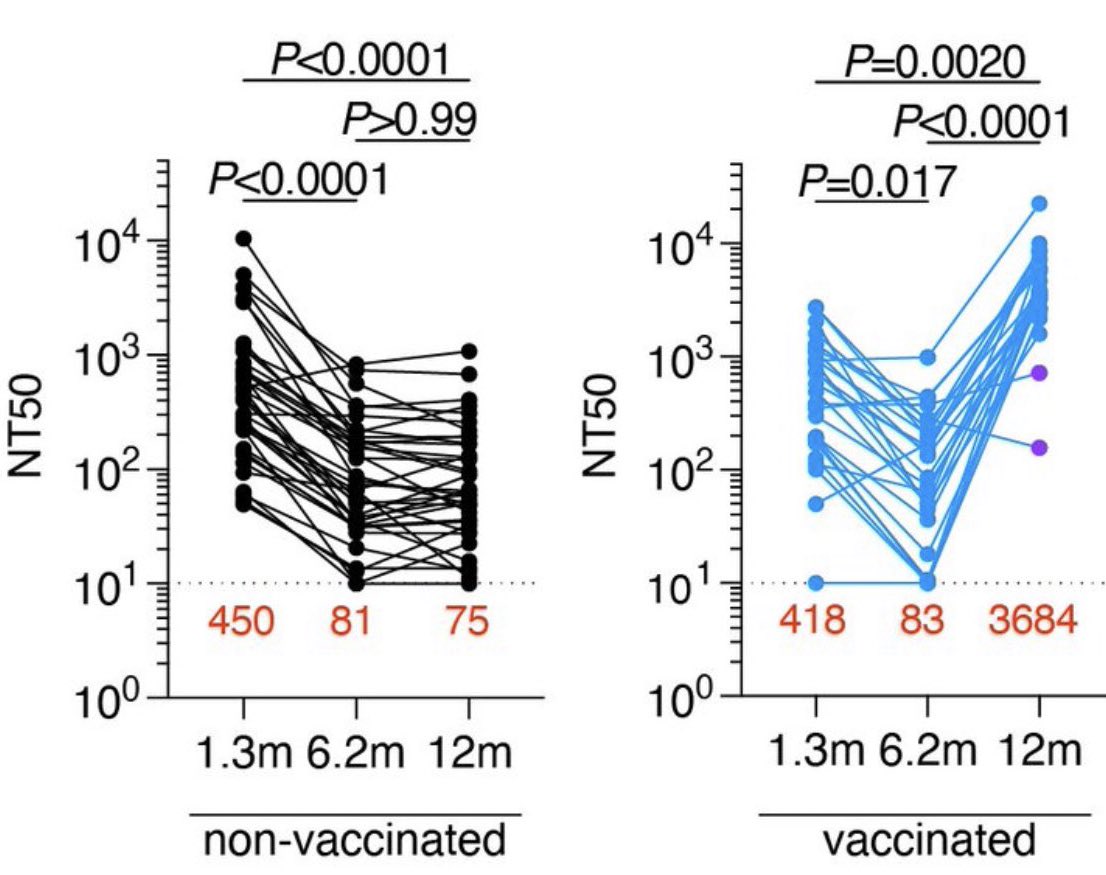
Let’s clear up some confusion. Concerning AstraZeneca against B.1.617.2 and those reporting it is only 60% effective, let’s stop. It’s ONLY 60% at 21 days post-second dose follow-up. At the 11-12 week follow up, one would expect it to be closer to 80-90% range. Why? See here.
Also, NO, it doesn’t take AstraZeneca 12 weeks post-second dose to achieve efficacy either. So don’t get confused. Remember that rollout of second doses of AstraZeneca was later than Pfizer in the UK. In this PHE analysis from last night, most (74%) people had only just recently 

(past 28 days) had their 2nd AZ doses, vs. less than half (46%) of Pfizer, and half of them had it more than 28 days ago. So for example, B.1.1.7, when you’re looking at this chart. AstraZeneca 2 doses after 28 days is 66%. AstraZeneca second dose AFTER 12 weeks is 85-90%. 

So this chart above measures the first dose after 28 days, and the second after 11-12 weeks hence the higher VE % for AstraZeneca! But this would make sense. Why? Because everyone knows AstraZeneca is a SLOW BURNER. It takes time to build up to a significant effect but it always 

catches up to Pfizer and we have seen that time and time again in real-world data. You have to remember that with the analysis last night from PHE, that the vaccines were NOT measured at the same equivalent follow-up time due to roll-out of second doses of AstraZeneca.
So a couple of things to also keep in mind when you look at the data. First, the CIs overlap meaning B.1.617.2 is not more threatening than B.1.1.7 concerning immune evasion and behaves similarly when we look at post-boost, with this in mind-
we would expect efficacy against severe disease to be as close to 100% as we would dream of being, which is FANTASTIC. With this said, knowing what we do thus far, if Pfizer and AstraZeneca had equivalent follow up time for this particular study we would see
the gap narrow and vaccine efficacy become more similar as to what we saw earlier this week with PHE’s report and B.1.1.7 (with the table I posted above). So, what do we need to do? First, we need to stop saying it’s “only 60%” effective because that’s not legit and will likely
change once PHE continues to put out more data. Give it time and you will see the efficacy will rise and be similar. Remember, it is a slow burner and then builds up. Also I would HIGHLY recommend reading @kallmemeg’s tweets on the matter.
You can find these studies here: khub.net/documents/1359… and: assets.publishing.service.gov.uk/government/upl…
To sum this up, the follow-up times between those who were given Pfizer and AstraZeneca are not equivalent hence why you’re seeing a difference in VE %. Due to the longer delay between AstraZeneca doses compared to Pfizer doses, follow-up of those fully vaccinated with
AstraZeneca was limited. With AstraZeneca being a slow burner and optimal dosing intervals being 8-12 weeks and taking weeks post-second dose for it to reach maximum effectiveness, we would expect it to be in the realm of Pfizer’s effectiveness in time. gov.uk/government/new…
Here we go! Please see these recent threads from @kallmemeg and @jburnmurdoch. TLDR: “Final” efficacy is higher.
https://twitter.com/kallmemeg/status/1396540359040282624?s=21and
https://twitter.com/jburnmurdoch/status/1396531241135087616?s=21
• • •
Missing some Tweet in this thread? You can try to
force a refresh







